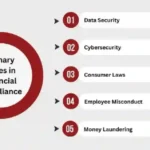Study techniques. They’re the real game-changers when it comes to academic success. But if I’m being honest, I didn’t always have the perfect ones. In fact, my first year in college, I basically survived on coffee and cramming. Spoiler alert: It didn’t go well. If you’re in a similar boat, don’t worry—I’m here to help you out with some tried-and-true methods that’ll turn your study sessions into powerhouse productivity moments. Let’s dive in!
Why Study Techniques Matter More Than You Think
I’ll be upfront with you: the key to academic success isn’t just about how many hours you spend with your nose in a textbook. It’s about how you spend those hours. Trust me, after years of frantic all-nighters, I learned that lesson the hard way. Effective study techniques don’t just help you cram more info into your brain—they help you actually retain that info long enough to pass your exam (and maybe even remember it a week later).
Here’s the thing: most students don’t study effectively. They read, highlight, and hope for the best. And then we wonder why everything gets blurry during an exam. But once you crack the code on the best study techniques, that whole “brain freeze” feeling? Gone.
Active Recall: It’s Like a Memory Workout
Look, you know those workout routines where people scream at you to “push through the pain”? That’s what active recall feels like. But in a good way.
Active recall is a study technique where you force yourself to retrieve information from memory. No more skimming over notes hoping it sticks. Instead, you quiz yourself, use flashcards, or even try to explain the topic out loud to your pet (my dog Daisy is probably smarter than I am by now).
Here’s where I went wrong: the first time I tried active recall, I thought I could just read my notes three times and call it a day. Nope. I had to stop, close the book, and make my brain work—whether I liked it or not. It’s like a brain squat. The more you practice it, the better your mind gets at holding onto that info for the long haul. It’s tough at first, but so worth it.
Spaced Repetition: Goodbye, Cramming!
I used to be a crammer. You know the kind: studying for 10 hours straight the night before an exam and praying my brain didn’t explode. Guess what? It didn’t work.
That’s where spaced repetition comes in. This study technique is like the best kind of scheduling hack. Rather than cramming everything into one long session, you space it out over a few days, weeks, or even months. This taps into something called the forgetting curve (fancy, right?), which is basically just a very scientific way of saying that we forget things quickly.
Instead of thinking you can memorize an entire textbook in one go, spaced repetition has you review the material at regular intervals. Let’s say you learn something today, you review it in two days, then again in a week, then again in a month. Apps like Anki or Quizlet? Total lifesavers. They’ll set up your review schedule and make sure you’re getting that material in your head before it fades into oblivion.
Pomodoro Technique: Sprint, Rest, Repeat
I can already hear you: “But I can’t focus for that long!” Oh, I get it. The distractions are real. But here’s the trick I use now, and I swear by it: the Pomodoro Technique.
The basic idea is simple: work for 25 minutes straight, then take a 5-minute break. Rinse and repeat. You can adjust the timing if you like, but trust me when I say—those 25-minute bursts are magic. You’re basically tricking your brain into thinking it only has to work for a short time. Then, when you take that 5-minute break, it’s like giving your mind a mini vacation. The result? Focused, productive study sessions. You’re on fire.
A quick tip: during those 5-minute breaks, don’t check your phone (yes, I know it’s tempting). Get up, stretch, grab some water, or do some jumping jacks. Breaks should be about resetting, not scrolling through Instagram. You don’t want your mind to stay stuck on that endless news feed loop.
Mind Mapping: Visualize It
I used to think mind maps were a total waste of time—until I actually tried them. Now, I’m a convert.
Mind mapping is all about creating a visual representation of what you’re learning. You start with a main idea or concept in the center, and then branch out with related subtopics, facts, or details. It’s like drawing a web of knowledge. (Honestly, if you’d seen my first mind map, you would’ve thought I was creating a conspiracy theory board—papers and pens everywhere.)
Here’s the kicker: mind maps help you see how different ideas connect. For instance, when I was studying history, I mapped out the causes of World War II, and suddenly the relationships between political alliances made way more sense. It’s like when your mom tells you to “organize your thoughts” but in a way that doesn’t sound condescending.
You can use online tools like XMind or MindMeister, or just go full-on analog with colored pens (it’s a vibe). Trust me, you’ll start seeing patterns in your study material that weren’t obvious before.
The Feynman Technique: Teaching for Understanding
Okay, real talk—this one is gold. Named after physicist Richard Feynman, this technique has you teach a concept as if you’re explaining it to a 5-year-old. The idea? If you can explain something simply, you actually understand it.
I first tried this while studying for a biology exam. I grabbed a whiteboard (and my poor cat, Socks, who had no idea what was happening), and I started explaining the Krebs Cycle to him. I quickly realized I had no idea what I was talking about—my cat just stared at me like I was an alien. That’s when I knew I needed to go back to my notes.
But here’s the magic: teaching forces you to break things down and identify the holes in your understanding. It’s like going from “I’ve seen this before” to “Wait, I actually get this now!”
Chunking: Break It Down, Baby
If you’re tackling complex material, chunking is your best friend. This technique is basically about grouping related pieces of information together so it’s easier to remember. Think of it like trying to memorize a phone number: you don’t remember all ten digits at once, you break it up into smaller chunks.
For example, when I had to memorize a 30-line poem for English class, I grouped it by stanzas and worked on one section at a time. Trying to memorize the whole thing at once felt like a nightmare, but breaking it up into smaller pieces made it manageable.
Pro tip: When chunking, try to create connections between the pieces. The more meaningful the chunk, the easier it is to recall.
Healthy Study Habits: Not Just About the Books
Study techniques are important, but let’s not forget about you. Your brain is a machine, but it needs fuel, rest, and TLC. I can’t tell you how many times I ignored sleep or neglected meals—until my productivity tanked and my stress level reached “panic attack” mode.
Here’s my advice: sleep. Eat well. Hydrate. Exercise. If you’re not taking care of your body, you’re essentially setting up your brain to fail. It’s like trying to run a marathon on empty—your legs just won’t get you far. Also, stress is a productivity killer. I’ve found that quick breathing exercises or even a 10-minute walk outside can do wonders when I’m feeling overwhelmed.
Personalizing Your Study Techniques
Look, no one study technique is going to work for everyone. I learned that the hard way, trying to force myself into the “perfect” study routine. The truth is, you have to experiment to see what works for you.
My friend Sara? She swears by listening to classical music while studying. Me? I need total silence—just me, my coffee, and the sound of my mind racing. It’s all about finding what helps you tune out distractions and focus.
So yeah, figure out your groove, adjust as needed, and roll with it. And don’t forget to cut yourself some slack—Rome wasn’t built in a day, and neither are perfect study habits.
Final Thoughts: Own Your Study Game
Here’s the bottom line: academic success isn’t about grinding all day long. It’s about working smart. By implementing effective study techniques like active recall, spaced repetition, and the Pomodoro Technique, you’re setting yourself up for success. Throw in a healthy dose of self-care, and you’ve got a recipe for a truly killer study routine.










Important Posts
Top Trends in Global Education You Should Know About
Education News & Tips: Unlocking the Secrets to Better Learning, Courses, and Careers
Top Skills Students Should Master Before Graduation